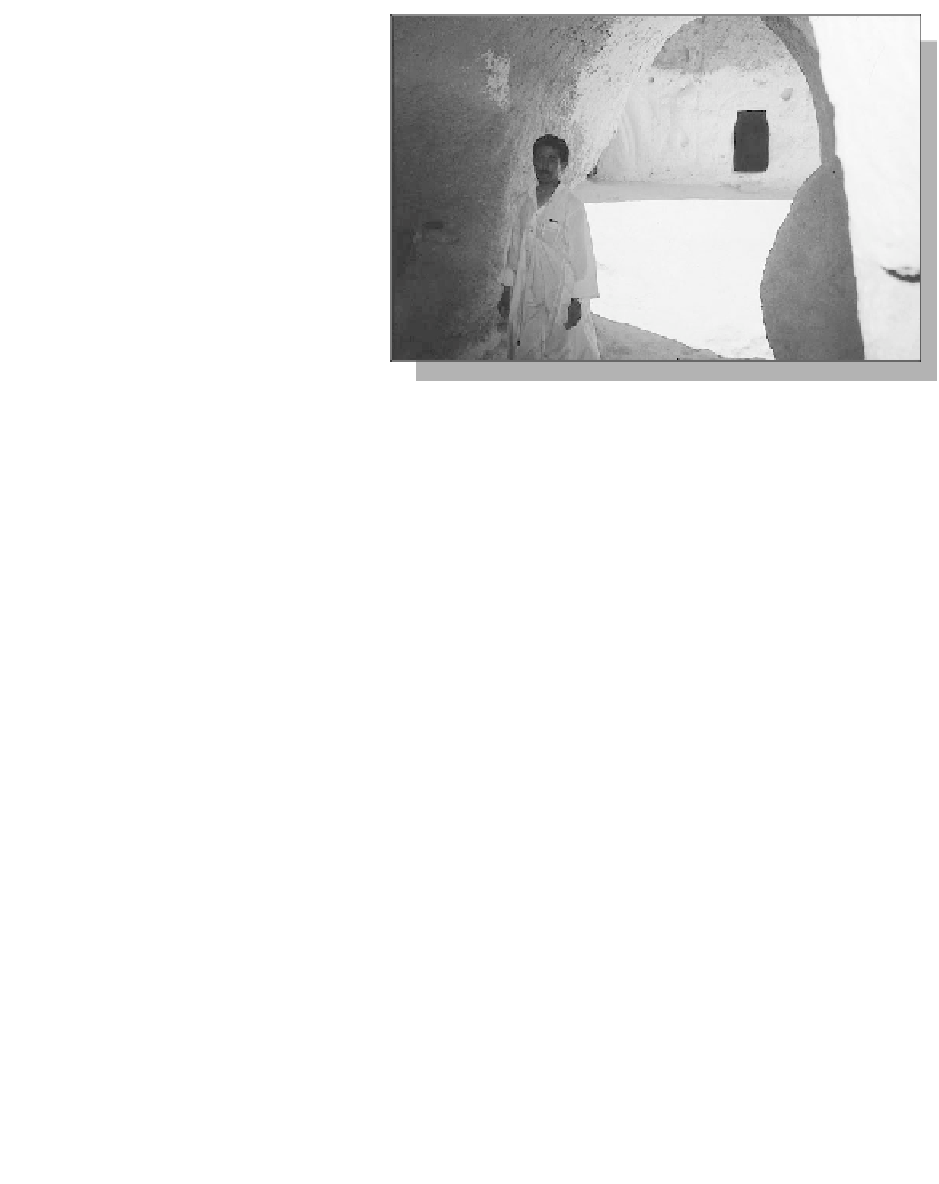Civil Engineering Reference
In-Depth Information
Blocks and prefabricated units of
light expanded clay are well-suited
for dismantling and re-use as long
as they were originally fixed togeth-
er with weak mortars or mechanical
jointing, such as bolts. Loose
expanded clay pellets around sur-
face water piping and ground insu-
lation can also be re-used if they
have been protected from roots,
sand and earth. All expanded clay
products are inert and can be recy-
cled for use as insulation under
roads, etc.
Figure 14.9: A traditional buried dwelling in Tunisia.
Earth and sand as climatic materials
Earth has a relatively low thermal insulation value, but, as with most materi-
als, a thick enough layer can provide adequate protection against the cold. In
the animal world it is not uncommon for rodents or other wild animals to live
in the earth and benefit from the warmth. Man has also used this to advan-
tage, and there are examples of underground buildings in most cultures,
including underground towns in China, Turkey, Tunisia (see Figure 14.9) and
Mexico.
Underground buildings
A buried building can be defined as a house roof and at least two walls covered by layers
of earth at least 50 cm deep. The insulation value of earth is about one-twenty-fifth of the
value of mineral wool, so if the roof is thinner than 2-3 m, extra insulation is needed. By
planting trees or bushes on the roof, heat loss is reduced. The building should preferably
be on a south-facing slope to take advantage of solar radiation. The floor must be higher
than the water table. The loading on the roof can be more than ten times that of a normal
building and the pressure on the walls slightly greater than that on a normal basement
wall. It is important to have good drainage from the roof, and that the earth is laid on a
well-drained material with a high friction coefficient.
Today, houses are generally built above ground. There are probably cultural reasons
for this move to the surface of the Earth, because, practically speaking, nothing is as shel-
tered as a buried house! People, it seems, no longer want to live like rats. But in the USA,
600 underground buildings were erected between 1978 and 1980, including many libra-
ries, schools and office buildings. The cost of an underground building has been calculat-
ed at about 10-20 per cent more than that of a conventional building (Winquist, 1980). The
main aim of these buildings is to save energy, and it is symptomatic that the sudden rise
in popularity of these buildings came after the energy crisis of the early seventies, only to

